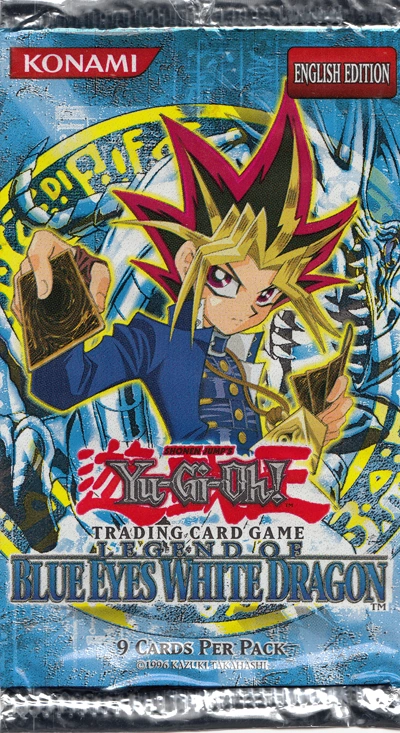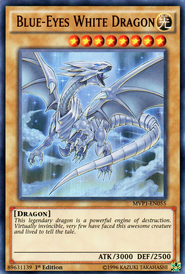Blue Eyes White Dragon Poker

- Blue Eyes White Dragon Poker Chips
- Blue Eyes White Dragon Poker Meme
- Blue Eyes White Dragon Poker Glasses
Black dragons, also known as skull dragons,7 were far and away the most vile tempered and cruel of all chromatic dragons. They were solitary creatures8 that lived in the swamps and marshlands all around Toril, from the Flooded Forest in Sembia to the jungles of Chult.9 1 Description 1.1 Appearance 1.2 Personality 2 Combat 2.1 Breath Weapon 3 Ecology 3.1 Lair 3.2 Parenting & Development 3.3. Aussie drops $120Gs on body modifications to morph into a 'blue eyes white dragon' Back to video. She also has a section in her Instagram account dedicated to before and after photos of her.
The Four Symbols (Chinese: 四象; pinyin: Sì Xiàng, literally meaning 'four images'), are four mythological creatures appearing among the Chinese constellations along the ecliptic, and viewed as the guardians of the four cardinal directions. These four creatures are also referred to by a variety of other names, including 'Four Guardians', 'Four Gods', and 'Four Auspicious Beasts'. They are the Azure Dragon of the East, the Vermilion Bird of the South, the White Tiger of the West, and the Black Tortoise (also called 'Black Warrior') of the North. Each of the creatures is most closely associated with a cardinal direction and a color, but also additionally represents other aspects, including a season of the year, a virtue, and one of the Chinese 'five elements' (wood, fire, earth, metal, and water). Each has been given its own individual traits and origin story. Symbolically, and as part of spiritual and religious belief, these creatures have been culturally important across countries in the East Asian cultural sphere.
History[edit]
Depictions of mythological creatures clearly ancestral to the modern set of four creatures have been found throughout China. Currently, the oldest known depiction was found in 1987 in a tomb in Xishuipo (西水坡) in Puyang, Henan, which has been dated to approximately 5300 BC. In the tomb, labeled M45, immediately adjacent to the remains of the main occupant to the east and west were found mosaics made of clam shells and bones forming images closely resembling the Azure Dragon and White Tiger, respectively.[1]

The modern standard configuration was settled much later, with variations appearing throughout Chinese history. For example, the Rongcheng Shi manuscript recovered in 1994, which dates to the Warring States Period (ca. 453–221 BCE), gives five directions rather than four and places the animals differently. According to that document, Yu the Great gave directional banners to his people, marked with the following insignia: the north with a bird, the south with a snake, the east with the sun, the west with the moon, and the center with a bear.[2]
In Taoism, the Four Symbols have been assigned human identities and names. The Azure Dragon is named Meng Zhang (孟章), the Vermilion Bird is called Ling Guang (陵光), the White Tiger Jian Bing (監兵), and the Black Tortoise Zhi Ming (執明).
The colours associated with the four creatures can be said to match the colours of soil in the corresponding areas of China: the bluish-grey water-logged soils of the east, the reddish iron-rich soils of the south, the whitish saline soils of the western deserts, the black organic-rich soils of the north, and the yellow soils from the central loess plateau.[3]
Blue Eyes White Dragon Poker Chips
Four Symbols in I Ching[edit]

The Four Symbols are closely connected with the yin-yang philosophy. Fuxi explained the Four Symbols as one of the stages of the creation of the world, in the following way:

無極生有極、 | Wújí shēng yǒu jí, | The Limitless (無極; wuji) produces the delimited (有極; youji), |
Correspondence with the Five Principles[edit]
These mythological creatures have also been syncretized into the five principles system. The Azure Dragon of the East represents Wood, the Vermilion Bird of the South represents Fire, the White Tiger of the West represents Metal, and the Black Tortoise (or Black Warrior) of the North represents Water. In this system, the fifth principle Earth is represented by the Yellow Dragon of the Center.[4]
| Four Auspicious Beasts | Five direction | Five seasons | Five colors | Wuxing | Four Symbols | Yao | Four Gods |
|---|---|---|---|---|---|---|---|
| Azure Dragon | East | Spring | Green | Wood | Young yang | ⚎ | Kōbō |
| Vermilion Bird | South | Summer | Red | Fire | Old yang | ⚌ | Zhurong |
| White Tiger | West | Autumn | White | Metal | Young yin | ⚍ | Jokushū |
| Black Tortoise | North | Winter | Black | Water | Old yin | ⚏ | Genmei |
| Yellow Dragon or Qilin | Central | Midsummer | Yellow | Earth | Houtu |
Correspondence with the four seasons[edit]
The four beasts each represent a season. The Azure Dragon of the East represents spring, the Vermilion Bird of the South represents summer, the White Tiger of the West represents autumn, and the Black Tortoise of the North represents winter.[5]
See also[edit]
Blue Eyes White Dragon Poker Meme
- Four Holy Beasts, the Vietnamese version
References[edit]
- ^'西水坡遺址里的圖案擺放,預示著古代某種神秘的星象'. KK News (in Chinese). 2018-04-30. Retrieved 2019-09-18.
- ^Pines, Yuri. 'Political Mythology and Dynastic Legitimacy in the Rong Cheng Shi ManuscriptArchived 2012-04-25 at the Wayback Machine'. Bulletin of SOAS, Vol. 73, No. 3 (2010), p. 515.
- ^N, Brady and R, Weil. [Elements of the Nature and Properties of Soil]. (2014). p. 89. Accessed 27 January 2015.
- ^A Brief History of Chinese and Japanese Civilizations: Third Edition, Schirokauer, Brown, Lurie, Gay. (2006) ISBN0-534-64307-8.
- ^'The Hidden or Implied Meaning of Chinese Charm Symbols - 諧音寓意 - Differences between Chinese Coins and Chinese Charms'. Gary Ashkenazy / גארי אשכנזי (Primaltrek – a journey through Chinese culture). 16 November 2016. Retrieved 22 May 2018.
